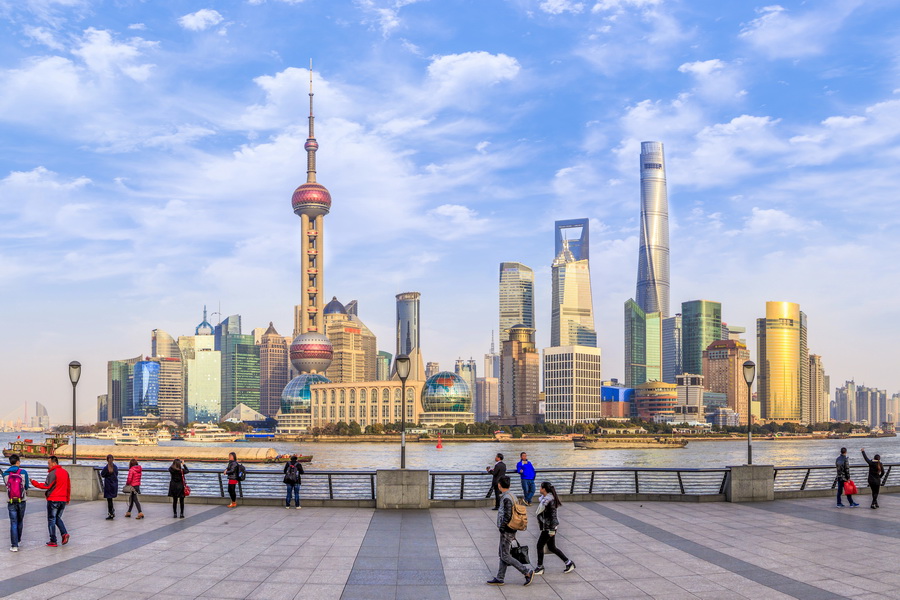For over 5,000 years, China (中华人民共和国) has grown from early river valley settlements into one of the world’s most enduring and inventive civilisations.
The Chinese logogram 中國 ("Zhōng" and "Guó") is often translated as the “Middle Kingdom” – a land where its rich cultural heritage has been shaped by perseverance, traditional philosophies, and spiritual ideas such as Qi, the vital energy of life, and Shen, the spirit believed to keep people alive and moving forward.
Many of these foundations continue to influence the rhythm of life across the country to this day.
It is rare to find places where this blend of past and present is more evident than in the city of Shanghai, China.
With a population of over 24 million, this dynamic metropolis is one of the country’s most international cities. Once an important regional river town and later a mid- 19th-century treaty port, it has since become a symbol of the country’s ambition and global outlook.
Shanghai (上海市) appears in layered contrasts: gleaming glass skylines alongside colonial-era, tree-lined boulevards; modernised Confucian values meeting cosmopolitan lifestyles; and local dialects spoken just steps from world languages.
Whether travelling in search of history, cutting-edge design, fine arts, or cuisines, visitors will find Shanghai full of depth and energy.
Now let’s dive deep into the many aspects of this incredible city that holds so much to be revealed. We hope this Shanghai travel guide will illuminate the path forward.
Shanghai Tours
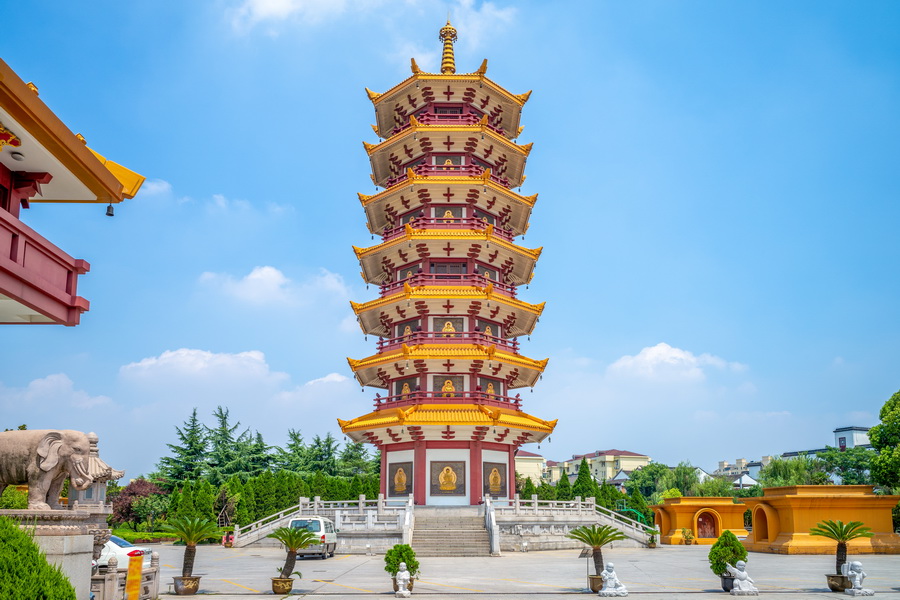
In Shanghai, there is truly something for everyone, with tours that can suit every curiosity, pace, and interest.
Journeyers may choose to join historic Shanghai tours through the lanes of the former French Concession, where stories of the colonial past linger among Art Deco façades and old villas tucked beneath plane trees.
Food-focused tours will introduce travellers to local delicacies and flavours of Shanghainese dishes served in small family-run restaurants or in upscale rooftop bars.
For those drawn to Shanghai’s spiritual side of life, visits to ancient temples and traditional teahouses could shine a light on beliefs about energy, harmony, and the meaning of life.
Architecture and design enthusiasts may enjoy tailored routes that showcase the bold skyline of business districts or the quiet elegance of heritage neighbourhoods.
And for a change of pace, a cruise on the Huangpu River gifts a fresh perspective on what’s around, especially as the city shimmers at night.
Explore Shanghai, Beijing, Xi’an, and many other destinations on Advantour’s itineraries, designed for all interested in learning about China’s history and modern vitality.
This 8-day travel takes you through China’s iconic trio: Beijing's imperial landmarks, Xi’an's ancient wonders, and Shanghai's modern charm, paired with a high-speed train ride and scenic walks.
For those who prefer small-group walks, curated cultural itineraries, or quality time with a local expert, Shanghai’s many tours can turn the city’s richness into something personal and memorable.
Best Time to Visit Shanghai
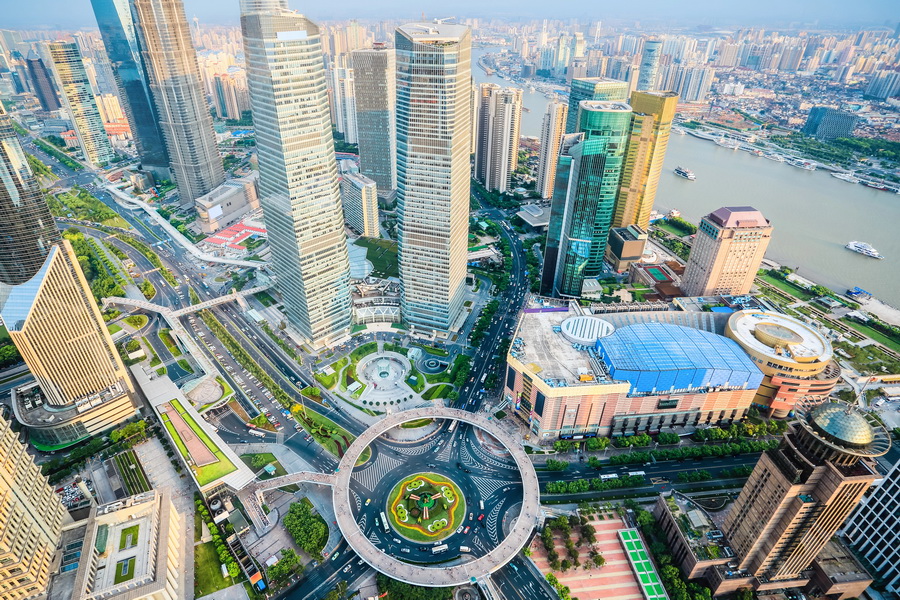
The best time to visit Shanghai often depends on one’s comfort with heat, humidity and crowds.
Spring (April to May) and autumn (September to October) are generally considered the most pleasant, with mild temperatures, clearer skies, and vibrant greenery or golden foliage. These seasons also host cultural events such as the Qingming Festival (清明节) in April and the Mid-Autumn Festival in September. The Shanghai Tourism Festival, held every September, promotes the city’s culture and local heritage, while China’s National Day holiday on October 1st brings large-scale celebrations and bustling streets.
June is quieter, though more humid and prone to showers – but it’s also when film enthusiasts gather for the Shanghai International Film Festival. July and August can be hot but promise lively night scenes.
December to February is colder, with fewer crowds, but do note that Chinese New Year (春节), usually in late January or February, is a major holiday filled with vibrant festivities and family gatherings.
That said, Shanghai’s four distinct seasons mean there is truly no “wrong” time to visit. If comfort and cultural atmosphere are the priority, spring or autumn is ideal. But no matter when you arrive, the city has something to share with those willing to explore it on its own seasonal terms.
History of Shanghai
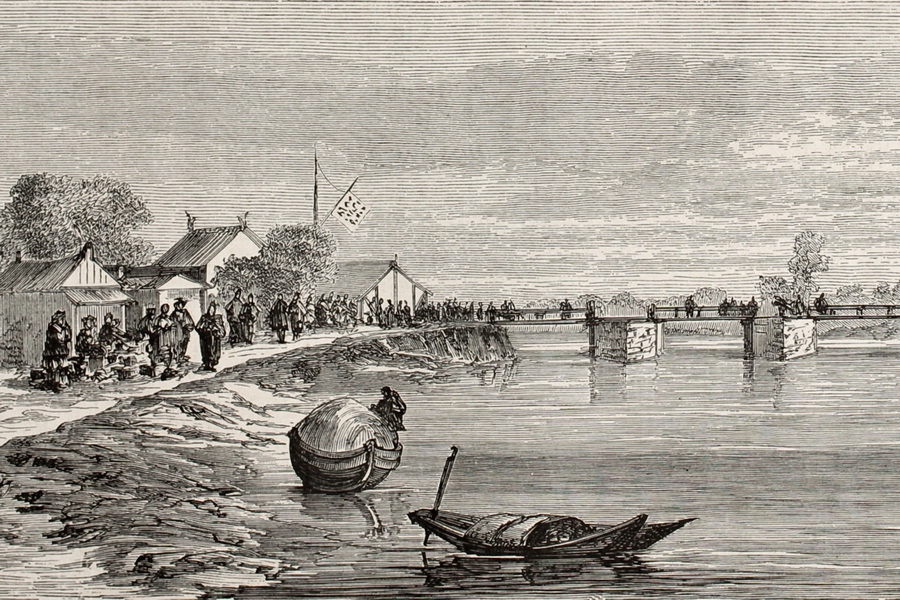
Before Shanghai began opening to foreign trade in 1842–1843, it was an active regional port, benefiting from its textile production and strategic location near the Yangtze River Delta. While not yet a major port, Shanghai was able to lay the groundwork for its transformation into one of China’s busiest harbours. Today, it is often celebrated as an integral part of the Maritime Silk Road’s enduring legacy.
Shanghai’s transformation into a global city began after the First Opium War, also known as the Anglo-Chinese War, when the Treaty of Nanjing compelled China to open several ports, including Shanghai, to international commerce. This marked the beginning of a period often referred to in Chinese discourse as the “Hundred-Year National Disgrace” (百年国耻), while in Western contexts it is commonly known as the “Century of Humiliation”. This era was characterised by significant challenges to China’s sovereignty due to external forces, leading to profound suffering and a lasting impact on national identity.
Shanghai became a treaty port and was divided into foreign-controlled concessions, most notably the Shanghai French Concession and the Shanghai International Settlement. These enclaves hold European-style buildings, new businesses, and Western customs in the city. While this colonial presence influenced Shanghai’s architecture and economic role, it also brought about injustices and hardships for the local population, shaping the collective memory of this period. Museums and school textbooks frequently highlight this chapter as a lesson in resilience and national dignity, emphasising the strength of the Chinese people in overcoming adversity.
Unlike some cities that demolished colonial-era districts, Shanghai chose to preserve much of its historical fabric. Today, travellers can see ancient temples sharing the cityscape with neoclassical banks and 1930s landmarks of Puxi – the older, western side of Shanghai.
While Chinese people still honour the hardships of that time, many modern Shanghai residents, particularly younger generations, strive to balance this historical awareness with a forward-looking, contemporary lifestyle. This complex blend of memory and momentum contributes to Shanghai's distinctive character.
We suggest approaching your visit with respect for the past, while remaining fully present in the moment.
Things To Do in Shanghai
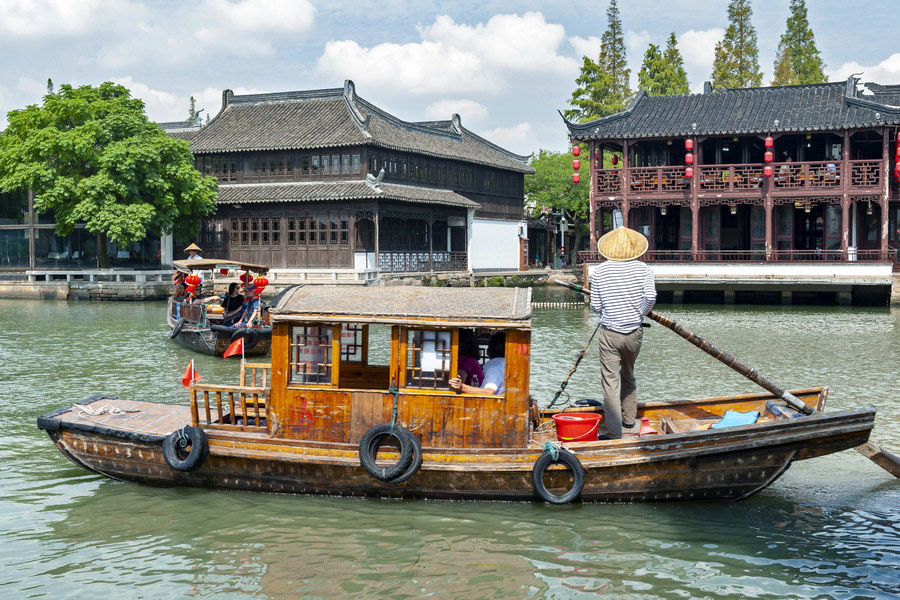
Some of the best things to do in Shanghai are often the ones that come up themselves when you let the city guide you.
At dawn, urban parks come alive with people practising gentle physical exercises or moving to soft music. It is a public space that somehow may feel personal – and a lovely way to encounter real people and local culture.
In the late morning, wander through quiet streets or slip into a shaded lane. Simply sit down with a cup of tea, observe, and see what unfolds. Then let the senses guide the journey of discovery to the nearest Shanghai street food stall, where there’s no need to speak the language to place an order.
Take a ride on a Huangpu River cruise that lets sightseers drift between centuries: on one side, the stone façades of the past; on the other, the glass towers of the unfolding future, with rooftop gardens floating above the city’s pace.
Finally, step off the main roads. With more than 800 parks, Shanghai allows for stillness and a space to simply be. In a city known for speed and abundance, quiet pauses are part of its rhythm. These moments are yet another way Shanghai introduces itself.
Places to Visit in Shanghai
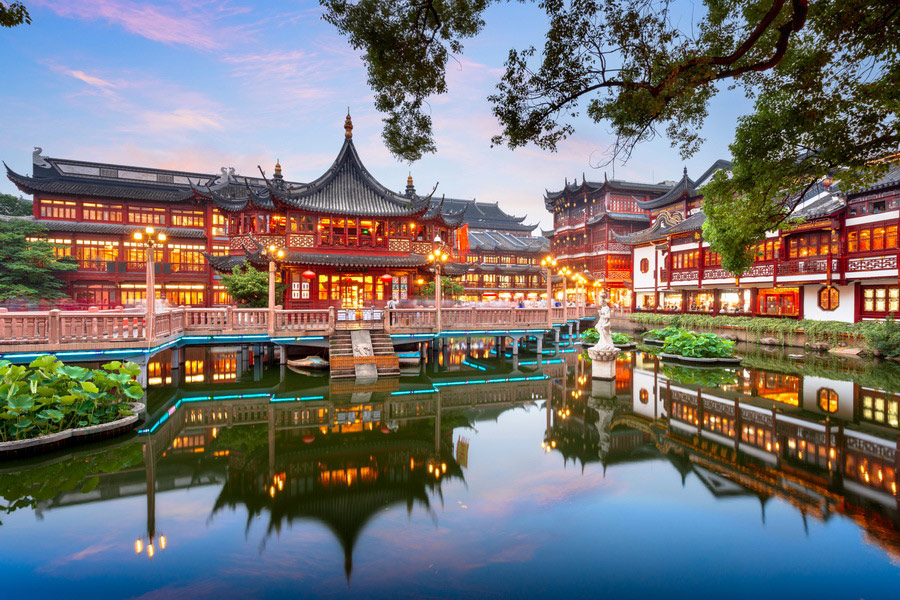
Along the Huangpu River, The Bund stretches in a proud row of historic buildings that once housed banks, consulates, and hotels. Across the water in Pudong New Area (浦东新区), a very different scene of modernity comes alive – the twisting form of the Shanghai Tower, the sharp lines of the Shanghai World Financial Centre (上海环球金融中心), and the orbs of the Oriental Pearl TV and radio tower (东方明珠广播电视塔). These two districts are linked by the Bund Sightseeing Tunnel, where commuters pass through glowing lights beneath the riverbed.
In the Old City, Yu Garden (豫园) takes you through a serene labyrinth of pavilions, ponds, and quiet courtyards. Nearby, the Yuyuan Bazaar is filled with shoppers tasting snacks, buying souvenirs, or simply watching the crowds. A short ride away, the Jade Buddha Temple (玉佛寺) houses rare sculptures carved from white jade and brought to Shanghai in the 1800s.
People’s Square (人民广场), just south of Nanjing Road, is often described as the “heart of the city”. It draws people in with public museums, wide plazas, and the nearby park where locals still post handwritten introductions for their unmarried children.
To experience a change in rhythm, stroll through the former Shanghai French Concession (上海法租界). Streets here are lined with trees and early 20th-century apartments. At Fuxing Park (复兴公园), locals can be found practising tai chi and qigong in groups or solo. The Wukang Mansion (武康大楼), once known as the Normandie Apartments, curves out onto a busy intersection like a witness to decades gone by. In nearby alleys, the stone gatehouses known as shikumen (a unique blend of Chinese and Western architecture styles) still hold their place, now reimagined as galleries and cafés.
To leave the centre behind, take a trip to Zhujiajiao (朱家角镇), an old water town built on canals, with wooden boats gliding back and forth. While modern Shanghai rushes ahead, places like this move at their own pace, offering a glimpse of another time.
Museums in Shanghai
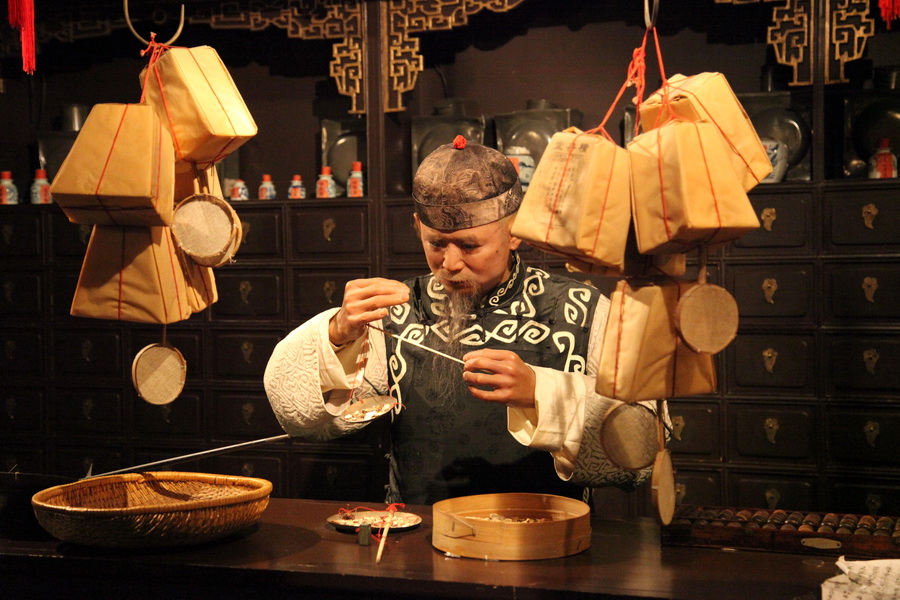
Cultural exploration in Shanghai often begins in the street but deepens in its many museums. Across the city, these institutions blend heritage with creativity. Step inside and discover China’s ancient dynasties as well as bold robotic installations shaped by science, space, and global cultural exchange.
In the centre of People’s Square, the Shanghai History Museum (上海市历史博物馆) is known for its Chinese bronzes, ceramics, and calligraphy, with exhibitions that unveil the depth of classical artistry. Nearby, the Museum of Contemporary Art Shanghai (上海当代艺术馆) and the Aurora Art Museum (震旦藝術博物館) present changing exhibitions that reflect how tradition can nourish something new.
A little farther out, a former textile factory along Moganshan Road has become the M50 Art District, which now hosts over 100 galleries and studios. This cluster exhibits everything from digital art to experimental photography. It’s an ever-changing space where creativity can be observed live, as many artists here have their workshops open to the public.
For astronomy enthusiasts, there are two must-visits: the century-old Sheshan Astronomical Museum in its hilltop observatory and the futuristic Shanghai Astronomy Museum (上海天文館) in Pudong – a curve-rich architectural wonder by Ennead Architects with its immersive 8K dome theatre.
Families might prefer the Shanghai Science and Technology Museum (上海科技馆) or the China Maritime Museum (上海中国航海博物馆), which traces China’s seafaring history through interactive displays and replica vessels.
And then the Shanghai Urban Planning Exhibition Centre (上海城市规划展示馆) boasts a striking scale model of the entire city, showing how the metropolis has grown. This centre reveals Shanghai not just as it is, but as it envisions itself in the years ahead.
Shanghai Theatres
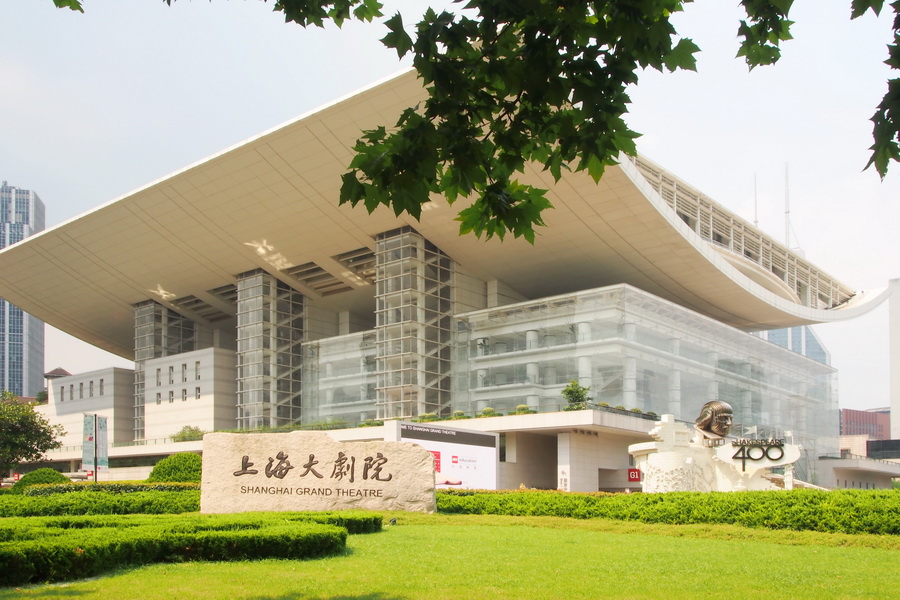
The Shanghai theatre scene reflects the city’s cultural ambition and creative momentum. In 2023, China’s Ministry of Culture and Tourism launched initiatives supporting theatre and opera, with performances staged across the country. These initiatives aim to support both national tours and village-level events alike. Public participation is rising, and Shanghai remains at the forefront.
The famous Shanghai Grand Theatre (上海大剧院) hosts opera, ballet, and symphonic concerts across three stages. Designed by French architect Jean-Marie Charpentier and completed in 1998, it stands as a symbol of international artistic exchange.
For traditional forms, the Tianchan Peking Opera Centre and Yifu Theatre (天蟾京剧中心逸夫舞台) runs regular performances of prominent styles of traditional Chinese opera – Peking and Kunqu. With refined singing, expressive movement, and stylised beauty, it provides a rewarding introduction to Chinese classical drama. The venue is well-designed, helping even unfamiliar art forms feel welcoming.
In a city always moving forward, its theatres embody spaces to pause and experience the art of performance at its finest.
Entertainment, Parks, and Shopping in Shanghai
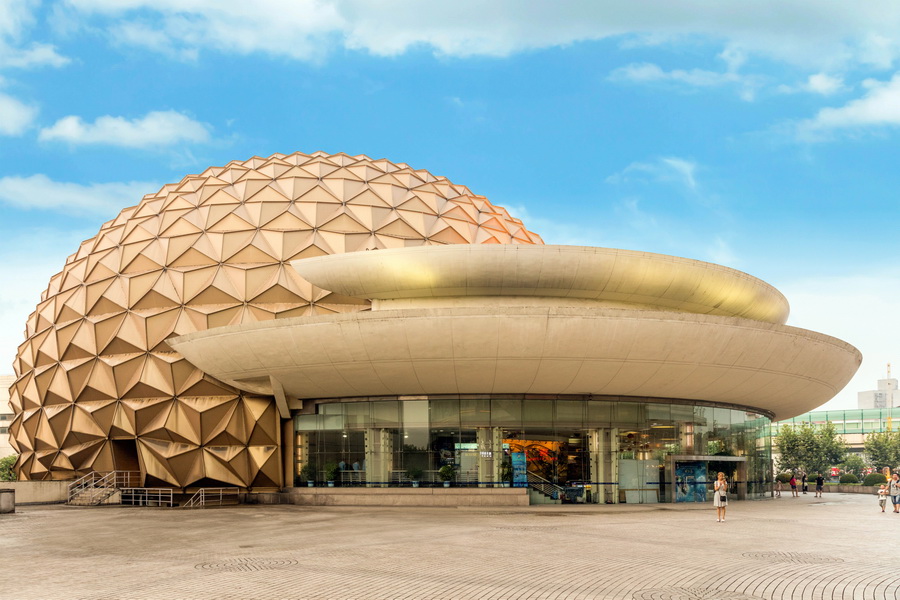
In Shanghai, leisure blends beautifully with daily rhythm. The city suggests exploring beyond galleries and landmarks through evenings of live performance, walks in playful parks, and markets filled with distinctive finds.
Entertainment comes in many forms. Rooftop lounges grant skyline views where the city lights seem to float just above eye level. Jazz bars create an atmosphere where music and setting feel deeply intertwined. Theatre venues host opera, ballet, and symphonic concerts, while acrobatic troupes continue a performance tradition known for skill and balance. For those drawn to film, Shanghai’s cinema legacy lives on in retro theatres and media-themed attractions.
Now let’s take a closer look at some of these amazing places in more detail.
Entertainment in Shanghai
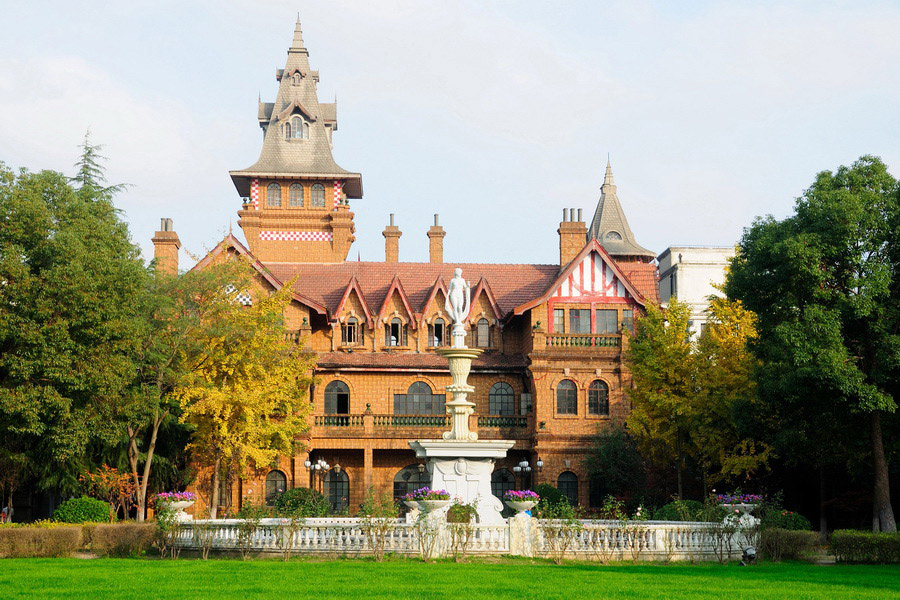
Shanghai’s entertainment scene pleasantly surprises visitors with a rich variety of performances, events and cultural experiences. One highlight is Shanghai Circus World (上海马戏城), an iconic venue renowned for spectacular shows by the acclaimed Shanghai Acrobatic Troupe. Most evenings, the troupe presents the celebrated ‘ERA: Intersection of Time’ performance – a dazzling blend of traditional acrobatics, modern stagecraft, lighting and music. Performances typically begin at 7.30 p.m., and advance booking is recommended. For families, Shanghai Circus World also stages lively ‘Happy Circus’ matinees, featuring acrobatics, comedy and colourful acts that appeal to all ages.
In the evening, rooftop venues in Pudong and along The Bund host live music sessions. The Old Jazz Band at the Fairmont Peace Hotel stands out for its old-world charm and seasoned musicians, evoking a nostalgic connection to the city’s past.
Film lovers may wish to explore Shanghai’s cinematic legacy at Shanghai Film Park or seek out restored vintage cinemas in the former French Concession. These venues occasionally screen Chinese classics and international titles in relaxing settings.
For a more spontaneous evening, head to FOUND158, an open-air, multi-level hangout hub. Known for its vibrant mix of cocktail bars, dance lounges, and live DJ sets, it’s popular with both locals and those visiting. On weekends, comedy nights, salsa dancing, and themed parties fill the schedule.
Parks of Shanghai
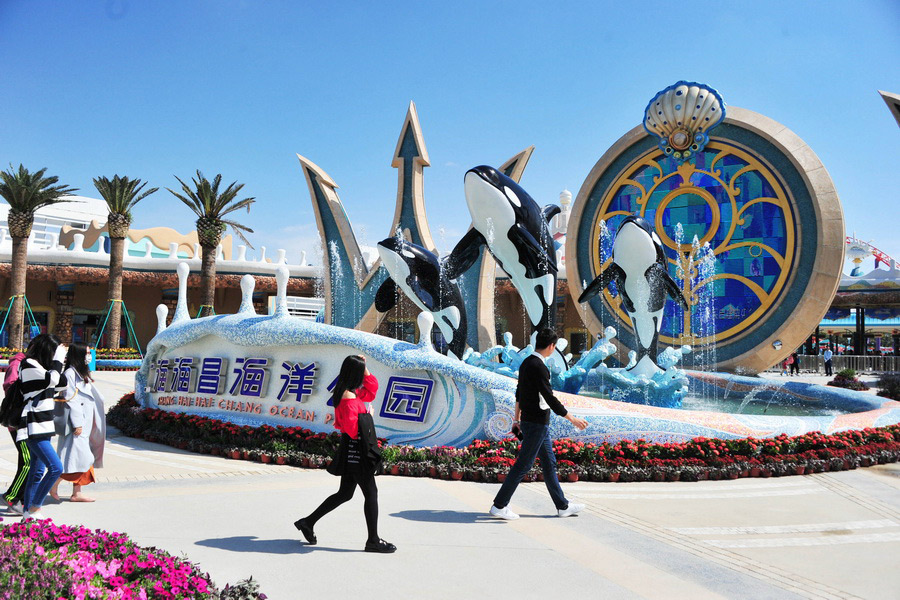
Shanghai invites you to explore two kinds of parks, each suited to a different mood and pace. There are green parks designed for leisure and wellness and amusement parks created for thrills and themed experiences. Together, they define the city’s dynamic outdoor culture.
Green parks are part of a long-term plan to make Shanghai a healthier and more liveable city. Today, there are more than 800 public parks available to everyone. Many neighbourhoods also have ‘pocket parks’ –small' community spaces with walking paths and places to sit under the trees. Across the city, one can find small green spaces tucked between buildings, often filled with tai chi or quiet conversation.
Century Park (世纪公园) consists of many open lawns and forested paths. Chenshan Botanical Garden (上海辰山植物园) gives a sense of quiet scale, with lakes and walking routes through floral landscapes. These places may feel less dramatic, but they are no less meaningful.
Amusement parks, on the other hand, are popular destinations, especially for families.
Shanghai Disney Resort (上海迪士尼度假區) is the best known, with its grand castle, themed lands, and signature rides such as TRON Lightcycle Power Run and Pirates of the Caribbean. Tickets can sell out during weekends and holidays, so advance booking is strongly recommended. It opens at 9:00 a.m., but earlier arrival is advised.
The Shanghai Haichang Ocean Park (上海海昌海洋公园) features marine animal shows, aquarium tunnels, polar-themed zones, and gentle rides for younger ones. It is especially popular with families, so weekdays tend to be less crowded. Located in Pudong, the park is easily reached by Metro Line 16, with a shuttle service from Dishui Lake Station.
Happy Valley Shanghai (上海欢乐谷) is a large amusement park offering roller coasters, water rides, and themed zones such as Gold Mine Town and Typhoon Bay. It’s suitable for both thrill-seekers and families with small children. Located in the Songjiang District, the park is accessible via Metro Line 9 (Sheshan Station), with a short taxi ride or shuttle to the entrance. Weekends and holidays are busiest, so early arrival is recommended.
Newer destinations like L+SNOW combine indoor skiing with seasonal amusements in a modern lakefront setting.
Together, these parks show us that in Shanghai, adventure and calm can both be found under the same sky.
Shopping in Shanghai
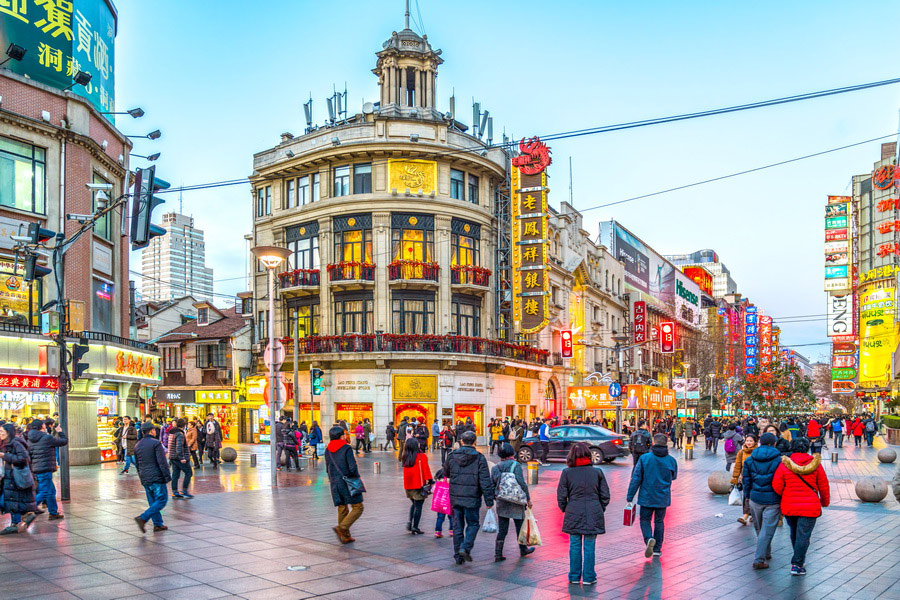
The shopping experience in Shanghai is a beautiful blend of tradition and modernity. East Nanjing Road Pedestrian Street is one of the busiest retail corridors in the world. It stretches about 1.2 kilometres (0.74 miles) from People’s Square to The Bund (外滩) and draws shoppers to its many flagship stores, glowing LED screens, and global brands like Apple, Uniqlo, and Huawei. Crowds gather here daily, and the atmosphere becomes especially lively after dark.
Shanghai’s best spots for traditional crafts are plentiful. For silk scarves, head to the Silk King boutique and South Bund Fabric Market, where three floors of fabric vendors and tailors work quickly and impeccably. If the chase is after hand-painted folding fans, look for the artisan studios around Jiu Jiao Chang Road. Yixing clay teapots are found in the shops around Yu Garden. Tianzifang, a charming lane-style complex, is ideal for browsing art shops, craft stalls, and boutiques where beautiful paper-cut art can be found.
For larger-scale shopping, Global Harbor mall, in Putuo District, is one of the biggest malls in China, with European-style décor, extensive dining options, and major fashion outlets.
Design lovers can visit HAUS NOWHERE, a concept store by Gentle Monster, where eyewear and fashion meet surreal design.
Finally, for convenience and unexpected delights, the massive Miniso Land store on Nanjing Road is popular for gift items and essentials.
The thrill of the hunt is part of the fun – almost every corner hides a surprise waiting to go home with you.
Food in Shanghai
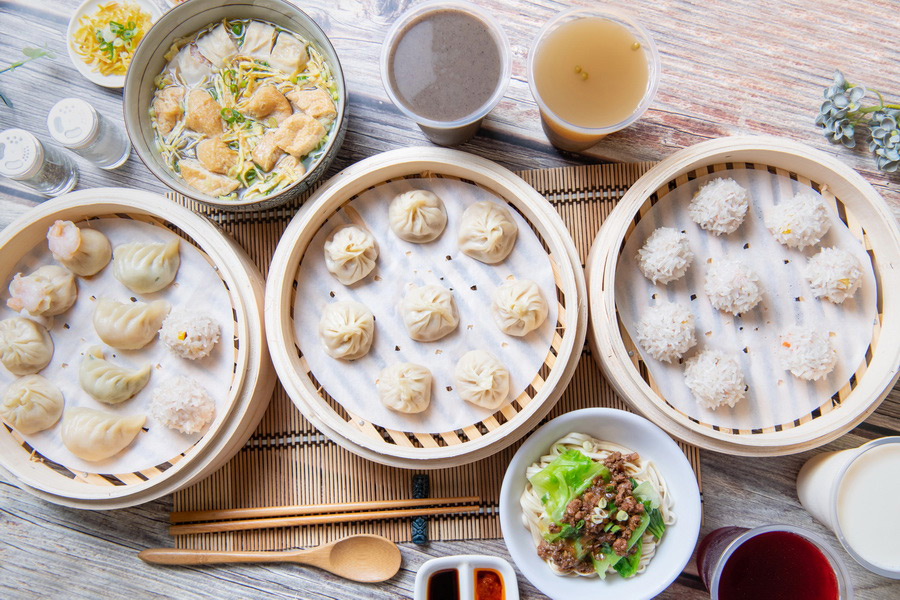
Shanghai’s food and dining culture blend deep-rooted tradition with new trends in the culinary arts. In the Old City, cross the zigzag bridge (九曲橋), also known as the Nine-turn bridge, and enjoy tea at the centuries-old Huxinting Teahouse, also known as the Mid-Lake Pavilion. Nearby, baskets of steaming, delicate soup dumplings, xiaolongbao (小籠包 /ˈʃaʊlɒŋˌbaʊ/) are served in modest restaurants where technique matters more than décor. And for elevated experiences, avant-garde dining rooms in areas such as The Bund, Lujiazui, and Xintiandi showcase seasonal tasting menus found nowhere else in the city.
Chinese Cuisine
Chinese cuisine is among the most diverse in the world, shaped by centuries of history, regional traditions, and, at times, pure practicality. With Shanghai Chinese food at its heart, the city’s vibrant restaurant scene beckons travellers to taste both heritage recipes and modern creations.
The three Michelin-starred Taian Table, led by chef Stefan Stiller, serves a multi-course tasting menu where each dish is prepared in an open kitchen, blending European techniques with Asian flavours. Jin Xuan, at The Ritz-Carlton Pudong, proudly presents refined Cantonese cuisine in an elegant setting on the 53rd floor, where signature dim sum and fresh seafood pair beautifully with sweeping views over the city. For a taste of culinary history, the storied Lu Bo Lang (Lǜ Bō Láng), set in a 400-year-old building near Yu Garden, impresses with its traditional Shanghainese dim sum dishes.
Shared meals remain central to tables around China, with an emphasis on balance, seasonality, and a deep cultural respect for food as both nourishment and an art form of its own kind.
Vegetarian Restaurants
Vegetarian cuisine has a long-standing place in Chinese food culture. Many dishes use bean curd, mushrooms, and seasonal greens to create satisfying alternatives to meat. In temple restaurants or modern vegetarian cafés, the cooking is thoughtful and often beautifully plated, with local favourites like shiitake mushrooms appearing frequently on the menu.
Shanghai’s well-loved Godly Vegetarian (上天园素食) is known for its extensive menu of stir-fried vegetables and flavourful soups served in a serene setting. Another popular spot, Vegetarian Lifestyle (素食生活), delights diners with fresh, organic ingredients, blending traditional Chinese recipes with contemporary fusion ideas in a bright, stylish space.
Places like this are all about plant-based cooking in Shanghai, staying true to the city’s spirit of balance and innovation.
Tea Houses, Bakeries, and Patisseries
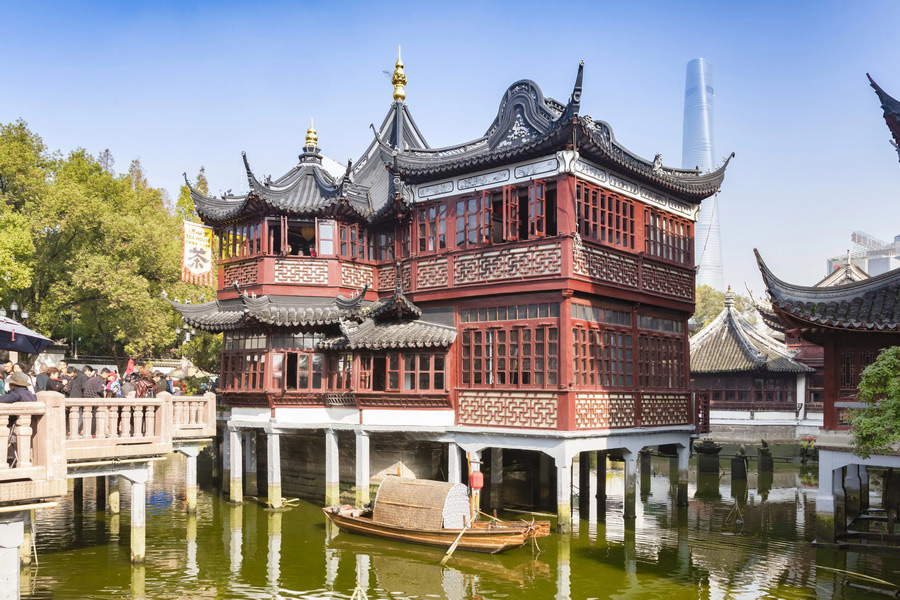
Tea culture runs deep in Shanghai, and the city is home to a wealth of tea houses where there is always a chance to slow down and savour fine Chinese teas. Classic teahouses open their doors to guests seeking a glimpse of old Shanghai, serving green teas, oolongs, pu-erhs, and delicate snacks. One such stop is Yuyuan Tea House, right at the entrance to Yu Garden, with its boutique tea shop downstairs and a serene upstairs seating area for a full traditional tea ritual – cleansing, steaming and steeping each blend with care.
While international cafés such as Starbucks Reserve Roastery and Luckin Coffee have added to Shanghai’s modern café scene, journeyers often find the city’s tea houses and traditional bakeries a more rewarding way to connect with local customs and quiet moments of daily life. For sweet accompaniments, Shen Da Cheng (沈大成) on Nanjing East Road is beloved for its soft, chewy rice cakes filled with sweet red bean and other seasonal flavours – a taste of classic Shanghai to enjoy on the spot or to take home.
City Transport in Shanghai
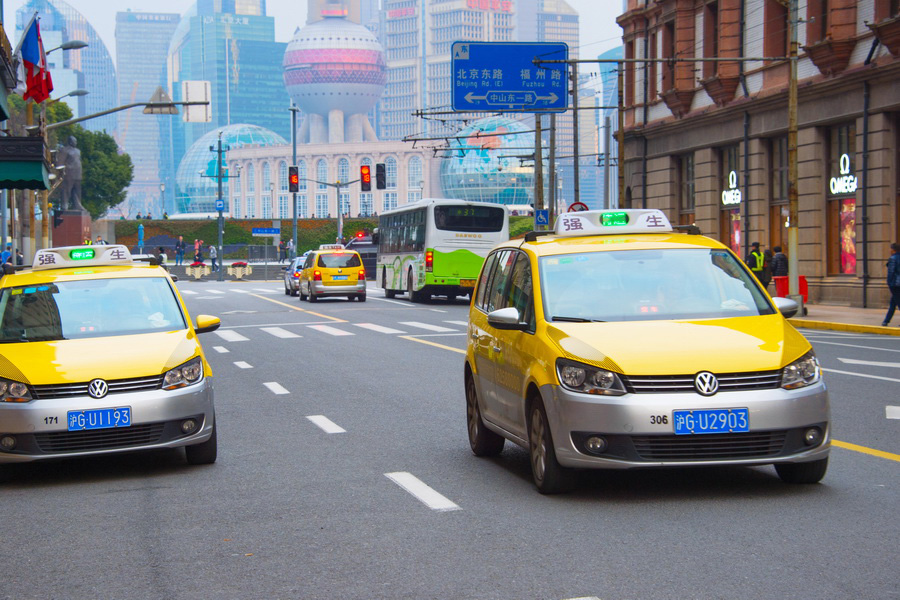
Shanghai’s comprehensive and efficient transport network connects every corner of the city, providing reliable options.
Buses and Shuttles
The city runs nearly 2,000 bus routes, covering urban, suburban, and night services. Standard fares range from 1 to 2 CNY/RMB (approximately $0.13 to $0.27, £0.10 to £0.20, €0.11 to €0.23) for short trips, while longer suburban routes can cost up to 11 CNY/RMB (approximately $1.53, £1.13, €1.31). Buses are particularly useful for destinations not served by the metro. Payment is accepted in cash (exact fare required), via the Shanghai Public Transport Card, or by scanning QR codes from apps such as Alipay or WeChat. Journeys may be slower during peak traffic hours.
Metro
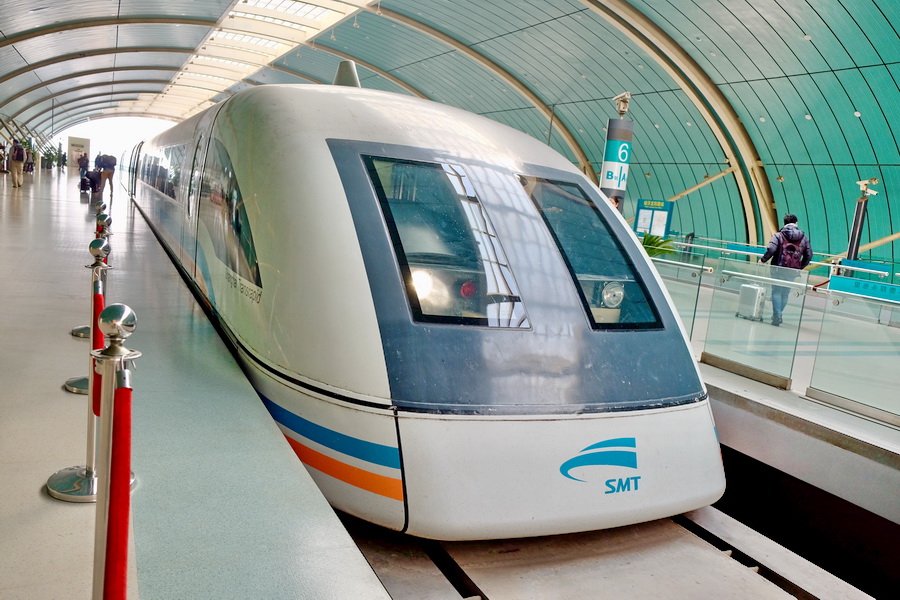
The Shanghai Metro now comprises 20 lines (including the Maglev train – a commercial magnetic levitation service), covering approximately 837 kilometres (520.6 miles) and serving 508 stations.
Most trains operate from around 5:30 a.m. to 11:30 p.m. on weekdays. Fares start at 3 CNY/RMB (approximately $0.41, £0.31, €0.35) for journeys up to 6 km, increasing incrementally to a maximum of 15 CNY/RMB (approximately $2.09, £1.55, €1.78). The network features lifts and step-free access at every station and is well maintained with bilingual signage and announcements in English and Chinese. Passengers can touch in and out using a Shanghai Public Transport Card, the Metro DADUHUI app, international bank cards, or QR code wallets such as Alipay and WeChat Pay. To avoid the busiest trains, consider travelling before 7:30 a.m. or after 7:00 p.m.
Taxis
Standard Shanghai taxi charges 14 CNY/RMB (approximately $1.95, £1.44, €1.67) for the first 3 kilometres (1.86 miles), then 2.7 CNY/RMB (approximately $0.37, £0.27, €0.32) per kilometre (per 0.621 miles) up to 15 kilometres (9.32 miles), and 4.05 CNY/RMB (approximately $0.56, £0.41, €0.48) thereafter. A 5% surcharge applies during weekday peak hours (7 a.m.–10 a.m. and 4 p.m.–7 p.m.), and a 30% night surcharge is in effect between 11 p.m. and 5 a.m. Travellers can hail a taxi on the street, queue at a rank, or book through the DiDi app, which provides upfront fare estimates, an English interface, and accepts international credit cards, Alipay, WeChat Pay, and the Shanghai Public Transport Card. Heavy traffic can delay even short trips, so booking via DiDi outside rush hours often ensures shorter waits and more reliable pickups.
Car Rental
Car rental suits those planning day trips outside the urban core, as parking, traffic, and toll systems in Shanghai can be complex. An international driving permit (IDP) may be required, depending on the driver’s country of residence, the rental agency, and the province in which the car is rented. In general, cars cannot be rented using only an international driving licence. However, some high-end rental services offer packages that help obtain temporary driving permits.
Most rental vehicles include toll transponders.
Other Modes of Transport
- Maglev Train: A magnetic levitation train linking Pudong Airport to Longyang Road Station in just 8 minutes, costing 50 CNY/RMB (approximately $6.97, £5.17, €5.96) one way.
- Ferries: Regular crossings of the Huangpu River (approx. 2 CNY/RMB, $0.27, £0.20, €0.11, €0.23) provide scenic views of the city.
- Bike-sharing platforms: Apps such as HelloBike, Alipay, Meituan, Didi, and Didi’s Qingju offer rentals from docking stations citywide, typically costing around 1 CNY/RMB (approximately $0.13, £0.20, €0.23) for every 15 minutes.
Please note that prices may vary or change without prior notice, and it is advisable to check for the most current rates.
How to Get to Shanghai?
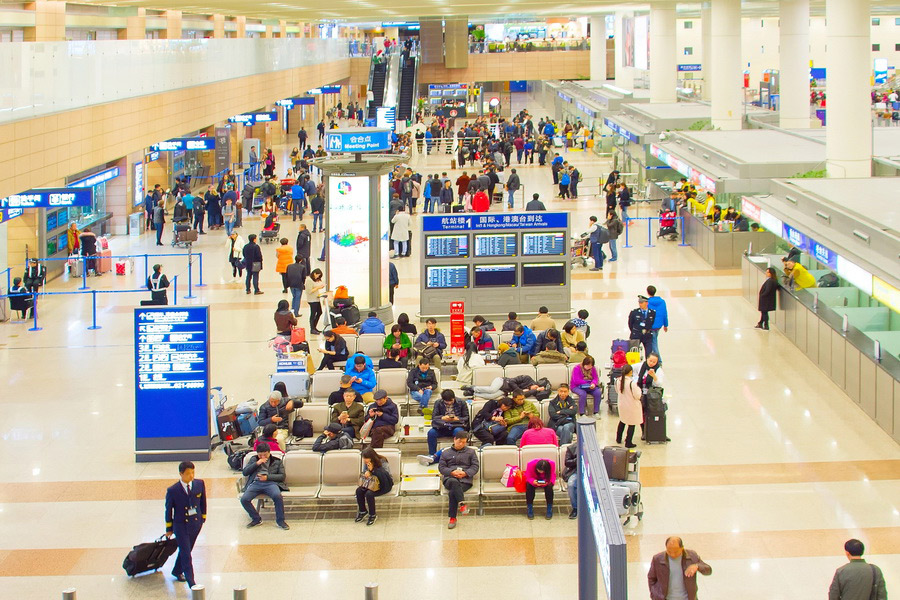
Shanghai is one of Asia’s most accessible cities, served by two major airports: Shanghai Pudong International Airport (PVG) for most long-haul international arrivals and a smaller number of domestic flights, and Shanghai Hongqiao International Airport (SHA) for regional and domestic flights. Shanghai Pudong International Airport is about 30 kilometres (18.64 miles) from the city centre and is easily connected via the Maglev train, metro, and taxis. Travellers arriving from other parts of China can opt for high-speed rail services into Shanghai Hongqiao Railway Station – one of the largest and most efficient hubs in the country.
Some international visitors may require a visa; the application process is structured but necessitates advance preparation. For short stays, select nationalities can take advantage of Shanghai’s 144-hour visa-free transit policy. Whether by plane or train, getting to Shanghai is often part of the adventure.
Languages Spoken in Shanghai
If you are wondering what languages are spoken in Shanghai, the official tongue is Standard Mandarin (Putonghua), the national standard language of the People’s Republic established in 1956 to unify communication across China’s many dialects. However, the local dialect, Shanghainese (a variant of the Wu language group), remains widely spoken – particularly among older generations – and stands as a strong symbol of regional identity.
English is taught in schools and used widely, though everyday fluency is still limited. Even so, many public signs are bilingual, and smartphone apps along with QR code menus make it easy for non-Chinese speakers to navigate.
Shanghai’s global character means that other languages – such as Cantonese, Korean, Japanese, and French – can also be heard in certain parts of the city.
Currency in Shanghai
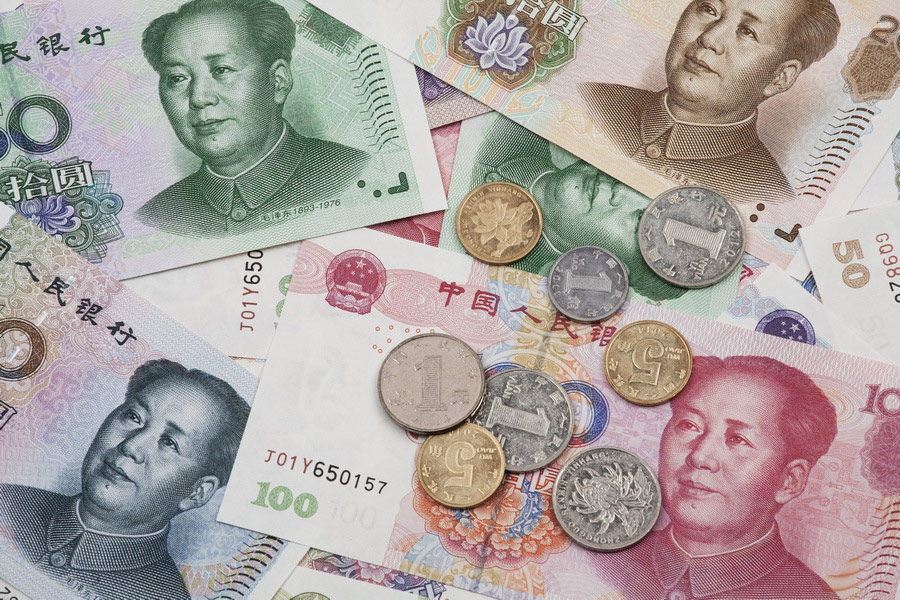
Shanghai uses the Chinese yuan (¥, CNY), also known as renminbi (RMB).
Banknotes are issued in denominations from 1 to 100 yuan, with 1 yuan equal to 10 jiao.
Currency exchange is available at international airports, banks, and major hotels, although rates are often more favourable at official bank counters.
While cash is accepted, mobile payment platforms dominate everyday transactions. Alipay and WeChat Pay are widely used – even by some street vendors and taxi drivers. Foreign visitors can now link international credit cards to these apps, making digital payments easier.
ATMs are easy to find throughout the city and usually have English-language instructions. Major credit cards (Visa, Mastercard, UnionPay) are accepted in malls, large hotels, and upscale restaurants, though smaller shops may still prefer mobile payments or cash. So, carrying a small amount of cash is advisable for public transport, local markets, or older establishments without digital terminals.
An interesting custom is the digital “red envelope” or hongbao (红包) – cash gifts sent electronically, especially during holidays. These virtual red packets often include cheerful animations and can be sent to individuals or groups.
Security in Shanghai
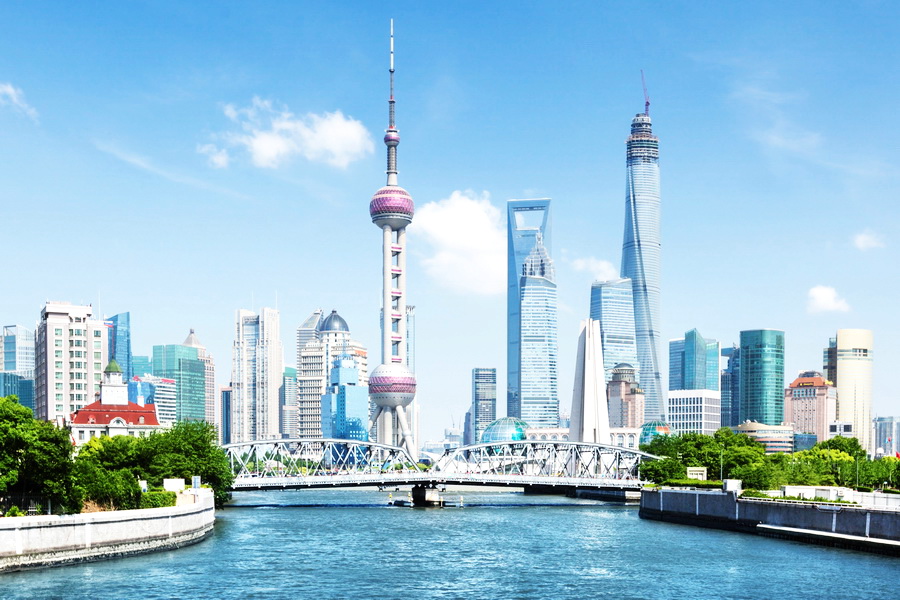
Shanghai is considered one of the safest major cities in the world, with low rates of violent crime and a visible police presence, particularly in popular areas. Still, as in any large city, it is wise to remain aware of your surroundings – particularly in busy places like markets, metro stations and shopping streets – where pickpocketing may occur, though it is relatively low compared to other major cities.
Keep valuables close, use hotel safes when available, and save digital copies of key documents (such as passports and travel insurance policies) in a secure cloud folder. Public transport and official taxis (or ride-hailing apps like DiDi) are generally safe and reliable. At night, stick to well-lit streets and familiar routes.
Most payments are made via mobile apps, but avoid using unsecured Wi-Fi, and consider installing a few VPN apps in advance. Power banks for rent are available across the city, in case your phone battery runs low.
With a little care, your experience in Shanghai can be both comfortable and secure.


